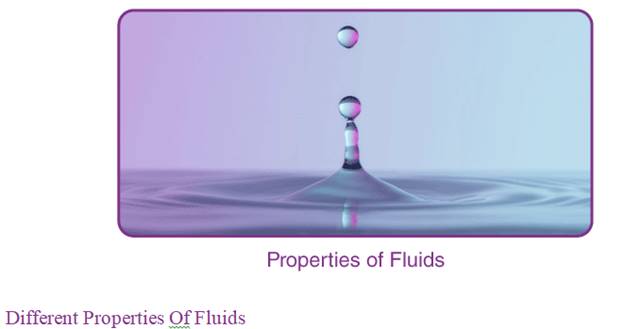
Properties of Fluids
To understand the different properties of fluids, first, we have to understand what exactly is meant by the term fluids. By definition, anything that can flow is a fluid. The water we drink, the air we breathe are all examples of fluids. Essentially, all liquids and gases are fluids.

Though each fluid is different from others in terms of composition and specific qualities, there are some properties which every fluid shares.
These properties can be broadly categorized under:
Density of a fluid is defined as the ratio of the mass of the fluid to its volume. The density of gases is dependent on pressure and temperature, while the density of liquid remains constant. The density of water is 1000 kg.m-3 while density of air is 1.225 kg.m-3.

Temperature is one of the thermodynamic properties of fluids that determines the state of hotness or coldness of it. Temperature is measured in either Kelvin or Celsius or Fahrenheit. Kelvin is the most common one that is used because of its independence from the properties of the substance. The following graph clearly depicts the effect of temperature on fluids.


